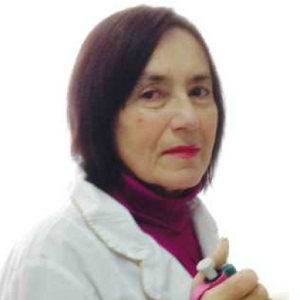Title : Experimental using of the liposomal ciprofloxacin for the treatment of chlamydia
Abstract:
The field of our research is liposomal drugs because liposomes help drugs penetrate into those areas of the body where they cannot get without liposomes. Therefore, we suggested that this property can be used in the treatment of such intractable intracellular infections as chlamydia. Chlamydia avoids the effects of drugs by hiding in the fat droplets contained inside the cells [1]. Chlamydia are transmitted predominantly sexually, penetrate the cells and use their resources for life and reproduction. The presence of these parasites in the body can lead to inflammation in the genitourinary system, lungs, eyes, leading to arthritis. We suggested that using the affinity of chlamydia for lipids, the use of liposomes loaded with antibiotics for the treatment of chlamydia would be promising, since the liposomes containing the antibiotic would "distract" chlamydia, imitating intracellular fat droplets.
In our studies, we used the Bu L2 strain of lymphogranuloma venereum as an infectious agent and 6-7-day-old chicken embryos as a model. Infection with Chlamydia trachomatis was carried out inside the yolk sac. Specific death of embryos and their opening were carried out on the 4th day after. (link to permission to work with animals) Autopsy of surviving embryos was performed on the 19-20th day after infection.To test the inclusion of the antibiotic in liposomes from the natural lecithin and from a mixture of negatively charged natural lipids were used. We found that the percentage of inclusion of the antibiotic ciprofloxacin in liposomes obtained from polar lipids with a negative charge is 91%, which is 3 times higher than the inclusion in liposomes from lecithin. That’s why we continued to work only with negatively charged liposomes. In the experimental groups of embryos after infection with Chlamydia trachomatis, 1% liposomes with ciprofloxacin were injected. After Chlamydia trachomatis infection, commercial ciprofloxacin (Ciprinol, KRKA, Slovenia) was introduced into the control groups of embryos. The ratio of ciprofloxacin: lipids was 1:2; 1:5, 1:10; 1:20. The death of chicken embryos infected with a suspension of venereal lymphogranuloma (group 3) without treatment was 100% on the 4th-5th-6th day after infection. The using of liposomal ciprofloxacin makes it possible to reduce the therapeutic dose of this antibiotic by 20 times.
An increase in the antichlamydial activity of liposomal ciprofloxacin can be explained by its targeted transport to cells. In addition, it should be noted that these studies require further continuation, due to the fact that doses of liposomal ciprofloxacin less than 0.012 mg per 1 chick embryo have not been studied.
Audience take away:
- Chlamydial infection is a serious public health problem. Chlamydia is an intracellular parasite that combines the properties of bacteria and viruses. Chlamydia are related to many tissues of the human body. Studies conducted at the Oakland Research Institute (USA) showed that Ch. trachomatis is not only the leading cause of sexually transmitted diseases, but also the second leading cause of blindness.
- In some parts of third world countries, more than 90% of the population is infected. The presence of a cell membrane combines chlamydia with bacteria - this allows the use of antibiotics for the treatment of chlamydia.
- Long-term use of high therapeutic doses of antimycotics and antibiotics affects the body due to the toxicity of the substances used.
- Liposomes help drugs penetrate into those areas of the body where they cannot get without liposomes. Therefore, we suggested that this property can be used in the treatment of such intractable intracellular infections as chlamydia.
- As much as possible a positive therapeutic effect has been reached: 100 % of chicken embryos with Chlamydia trachomatis were healthy after one injection of the liposomal ciprofloxacin. The use of liposomal ciprofloxacin makes it possible to reduce the therapeutic dose of this antibiotic by 20 times.
- Unfortunately, due to the military situation in Ukraine after the Russian attack, we cannot continue this work and conduct preclinical and clinical studies. We look forward to cooperation in any form of all those who are interested in this topic.



